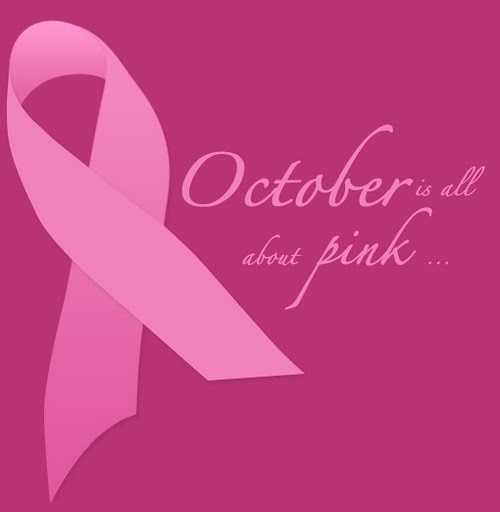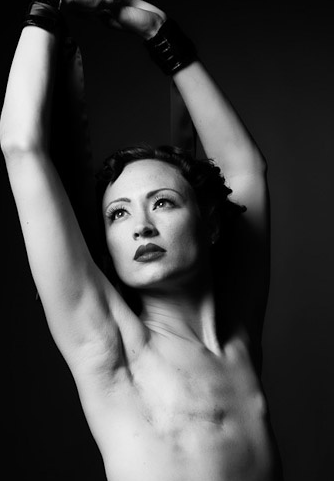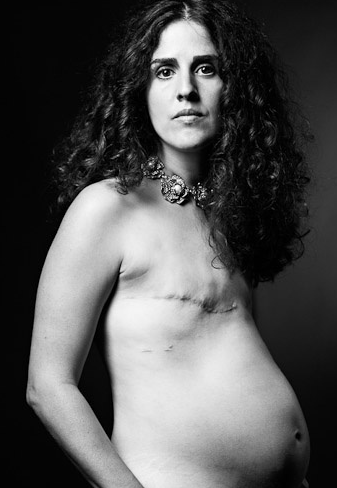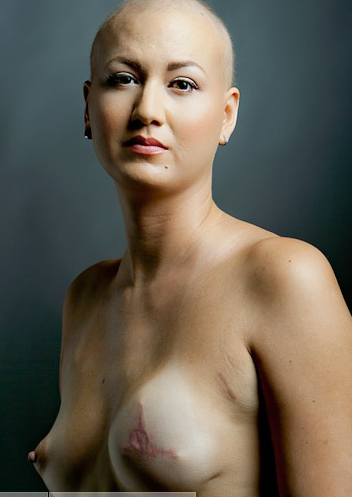
October is breast cancer awareness month, so you may be seeing pink ribbons and products more frequently. While the pink ribbon is a powerful symbol of breast cancer awareness, "pinkwashing" (exploiting consumer grief or guilt to sell products, such as pink hair dryers or nail polish, with minimal donations to breast cancer organizations) has been the target of much critique, in part because it allows consumers to feel that consumption of material goods is a solution to a widespread health problem. The SCAR project, which takes and exhibits photographs of young breast cancer survivors, offers a different visual argument for cancer awareness. Depending on your office environment, the images after the jump may be NSFW.

Image: David Jay, The SCAR Project
SCAR stands for "Surviving Cancer: Absolute Reality," and the images the project produces clearly offer a counter to the disembodied pink ribbon. SCAR's strategy is not entirely new; campaigns raising awareness for other issues have often used images of injured or otherwise physically affected individuals to further their cause. These images, however, avoid falling into overwhelmingly sentimental appeals to pity, guilt, or shock. The women pictured are self-selected, volunteers who chose to show their bodies to help fight breast cancer. While absent or reconstructed breasts may be shocking to some viewers, the comfort that the composition projects steers the images away from pure shock value. Looking directly into the camera without fear or shame, these women do not seem to need help; rather, with knowing expressions, they are here to help you.


Gathering support for a cause is difficult, and I certainly wouldn't discount the effect that pink ribbons have had on breast cancer awareness. However, the SCAR project seems an important counter to "thinking pink." At the nexis of tragedy and hope, these images seem to balance between the incessant positivity that Barbara Ehrenreich critiques in Bright-Sided and an apocalyptic sadness. These women are survivors, but they aren't unharmed; getting better and being strong does not have to (and often should not) mean hiding the marks of what happened to you. That complex message, spelled out with these women's bodies, may not always be apparent in the more common iconography of breast cancer.
Comments
The Power of Images
I will admit that when confronted with images of women with heavily scarred and breastless bodies that I viewed with my breast surgeon when planning for my impending mastectomies were too upsetting. Although I was never focused on my breasts, the extent of the cutting away all tissue, that my chest would become concave; I chose to have reconstruction, "to fill in the holes", as I described. I am glad to say the results are near perfect, except they aren't breasts at all. I am plainly satisfied to get up in the morning, pull a shirt on, and have no glaring reminders. Though it took an act of congress, I am glad to have had options. It would have been too hard.
Graceful and unsettling
Wow. Thanks so much for the eloquent and fascinating post. I find the first image by David Jay particularly captivating. The woman's hair, make-up, and pose are reminiscent of classic pin-up models. While the absence of breasts de-sexualizes the image and certainly unsettles the viewer (or, well, maybe that's just me), the woman remains strikingly beautiful. To me, this speaks to anxieties over loss of femininity or beauty - she is no less a woman for the loss of her breasts. This image goes a lot further in heightening my awareness, involvement, and hope than buying Yoplait yogurt or the pink hairdryer.
Reply to comment
I, too, find these images so powerful and the women in them so beautiful. I am glad you noticed the pin-up, because some of the other images also play with the conventions of fashion photography. David Jay is a fashion photographer and I think he does an excellent job of playing with and appropriating those conventions to show a different kind of beauty. He also shoots a wide variety of women, including women with unshaven armpits and athletic or average builds who would not fit into the realm of traditional modeling. I like these in part because I think they do more than raise awareness of breast cancer; they seem to make broader statements about disease, femininity, and invisibility. I am glad you had a strong reaction too.
they are brave enough to face the toughest, they are women
I am really amazed. they are so beautiful